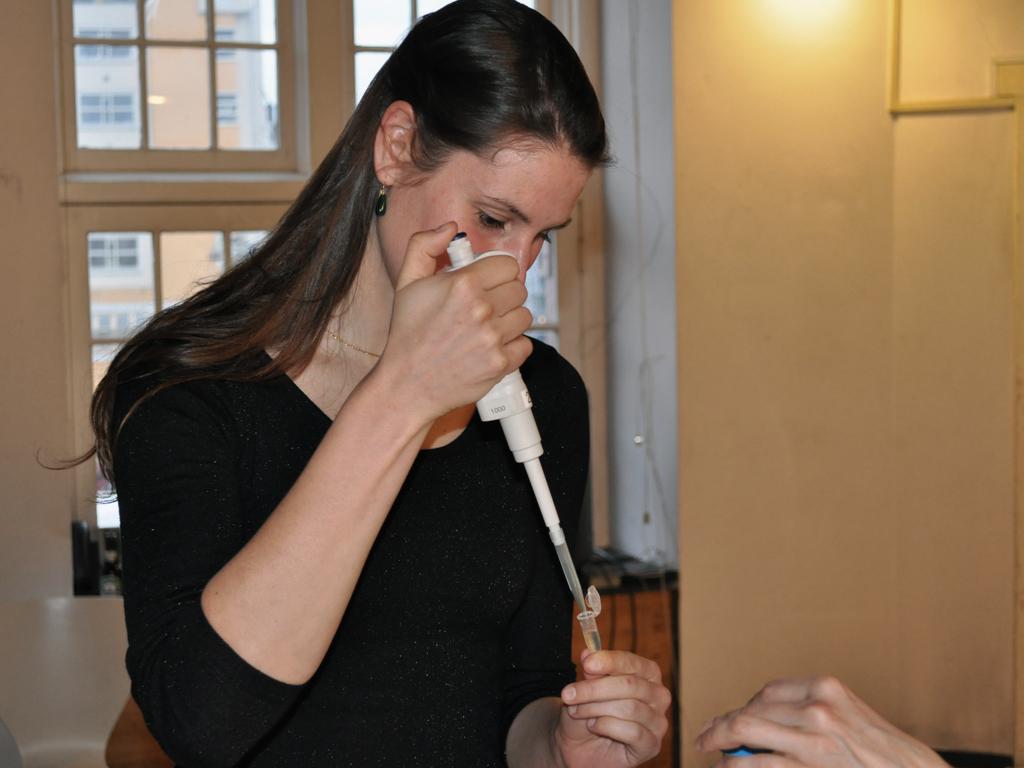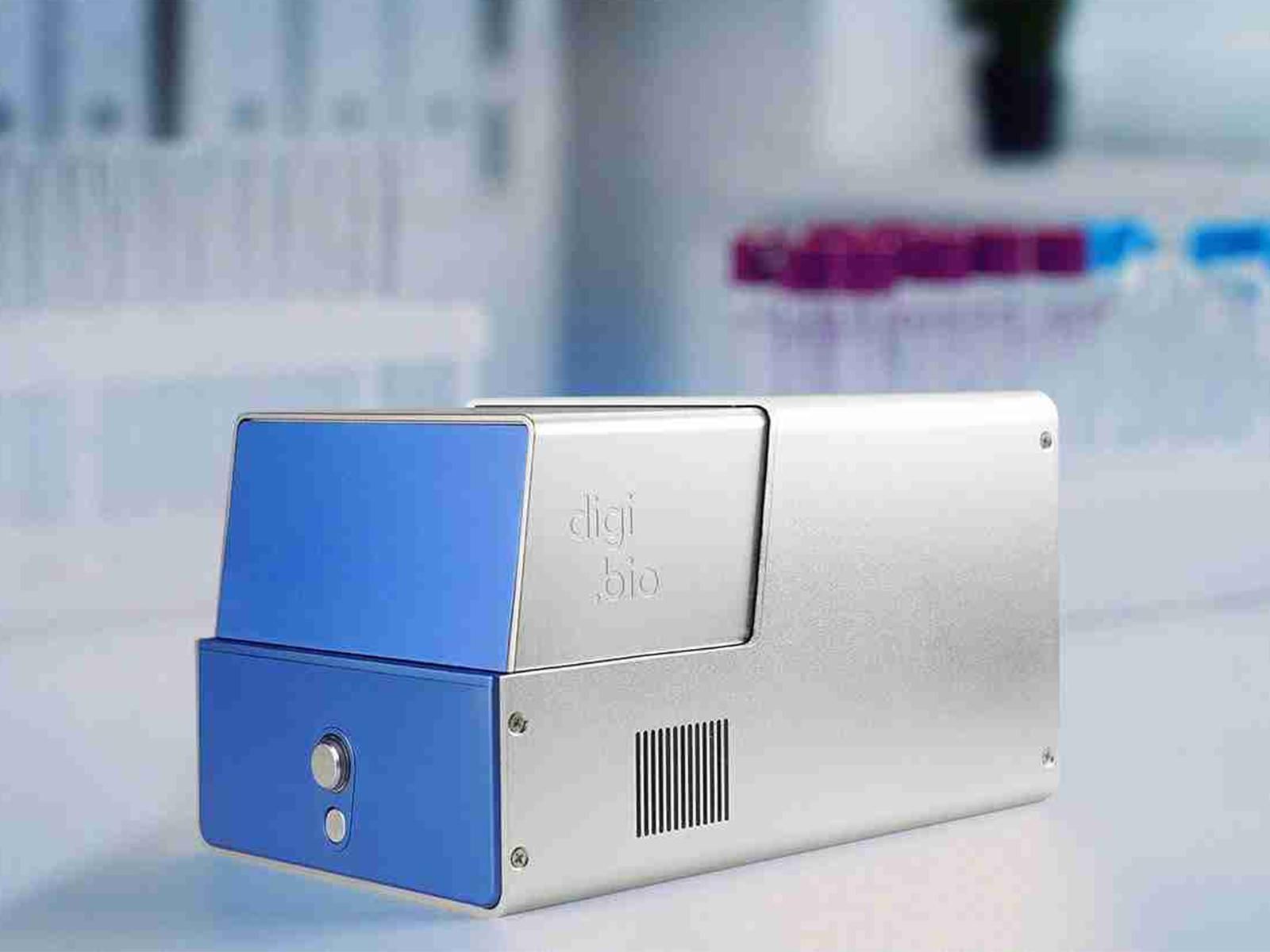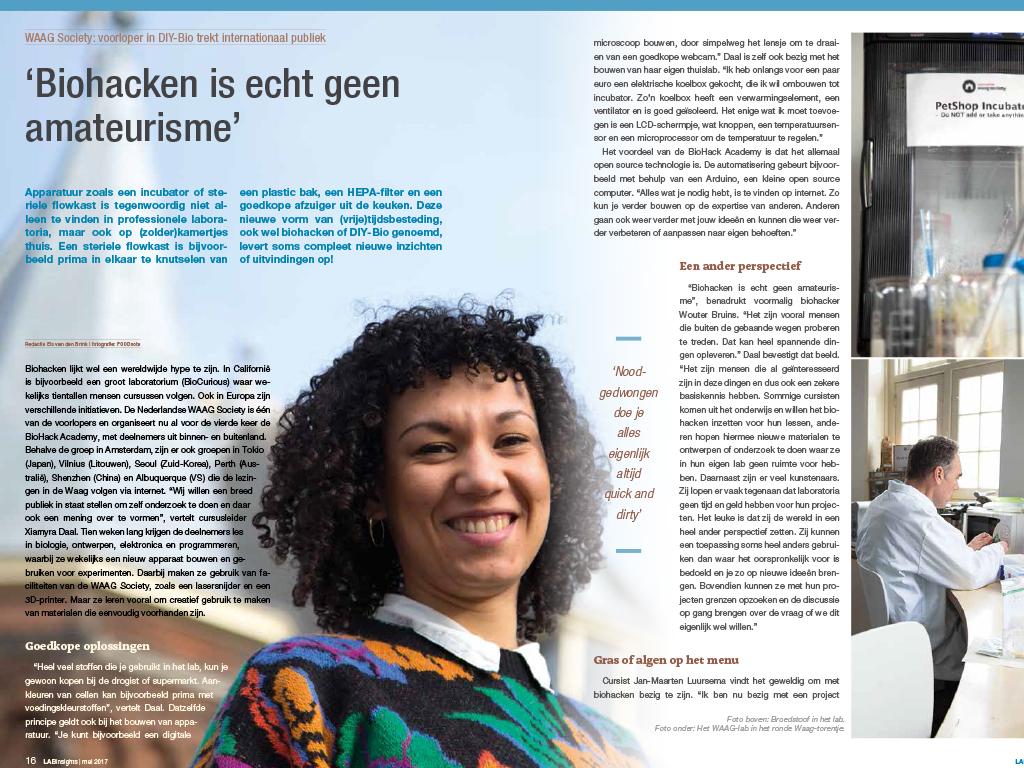On Wednesday, April 27th it was time for the 5th edition of Do it Together Bio. The event was led by Laura Cinti and Howard Boland who are co-founders of the C-Lab collective and also winners of the latest Designers & Artists 4 Genomics Award. It was a diverse event that included theory, practice, experimentation and discussion around bio-art, synthetic biology, magnetic bacteria and genetic modification regulation and lab safety. Laura and Howard also brought a prototype of their installation Living Mirror, which they currently develop at FOM Institute Amolf, where fundamental research on novel and complex (bio)molecular and materials systems is performed.
Introduction
At the first part of the workshop, Laura and Howard started with some theory on genetic modification, including illustrations of what we would be doing later in the workshop. They further talked about their practice at C-Lab, discussed experimentation as a process in the bio-arts, and referred to legislation complexities of exhibiting Genetically Modified Organisms (GMOs) to the public.
Making Competent Cells
Next, it was time for a carefully designed hands-on experience, where workshop participants created competent strains of E. Coli. Competent cells are bacteria which can accept extra-chromosomal DNA or plasmids. The making of competent cells included sampling of bacteria colonies, culturing the bacteria on a growth medium, chemically making the cell membranes porous to enhance the capacity for taking up foreign DNA. It was a complex process, in which workshop participants were familiarised with laboratory equipment and various essential techniques, explained in detail by the protocol provided by the artists. After the process, some of the resulting bacteria colonies would be ready to be used in genetic modification. Yet complex, it was also interesting to experience the protocol as banal or even boring.
Do It Together Bio #5: Synthetic Life
The fact of making colonies of cells that can receive foreign DNA is sensational, yet nothing of the actions in the given protocol reflect that when you are, as a laymen, putting those tiny bits of materials and liquids together, separating them again there after. To underline the action Laura and Howard prepared an agreement that every participant had to sign, stating they will not make any transgenic organisms on purpose (image of agreement and protocol), thereby, making tangible the radicality of pipetting certain compounds. I think Oron Catts once talked about the ‘aesthetics of disappointment’, pointing at a work of Bio Art and its often apparent banal appearance as opposed to what it actual represents and what meaning and perception it provokes. Same seems to be applicable here.
Living Mirror
During an interval, where we were waiting for the cells to cool, Laura and Howard explained their current work for their DA4GA awarded Living Mirror. The Living Mirror is an interactive bio-installation that is under development in collaboration with institution AMOLF. The installation will use fluorescent magnetotactic bacteria that can be manipulated in space through magnetism, in order to display images captured through a video camera. Not only were the workshop participants able to see a prototype of the installation, but we could also watch the bacteria through the new microscope of Waag’s Open Wetlab-in-the-making.
Discussion
Every Do It Together Bio event ends with a discussion, allowing both facilitators and audience to reflect upon the implications of the evening’s theme, the employed practices and their potential. This event ended with a discussion about the regulations and restrictions of working with genetically modified material. Should the public have access to this type of material practice and how could this be made possible? Is such strict control necessary when anyone can buy hazardous material at their local supermarket? And what happens with issues of control, responsibility and protocol? These were not easy questions to answer, but they sure led to an engaging discussion.
Addendum: outcome
A video of the transformation carried out on the 2nd May 2013, the red fluorescent protein construct with the competent cells created at the workshop.


